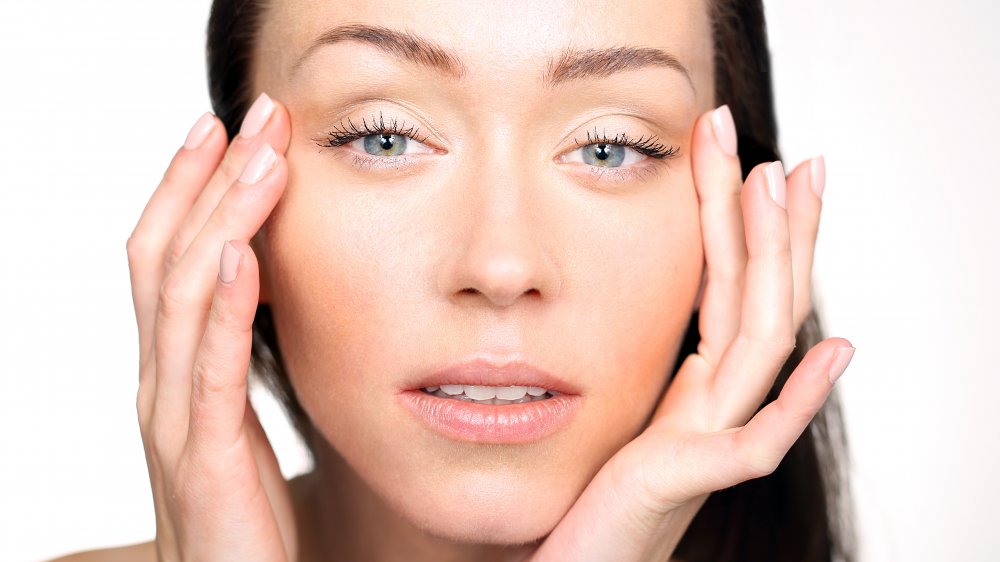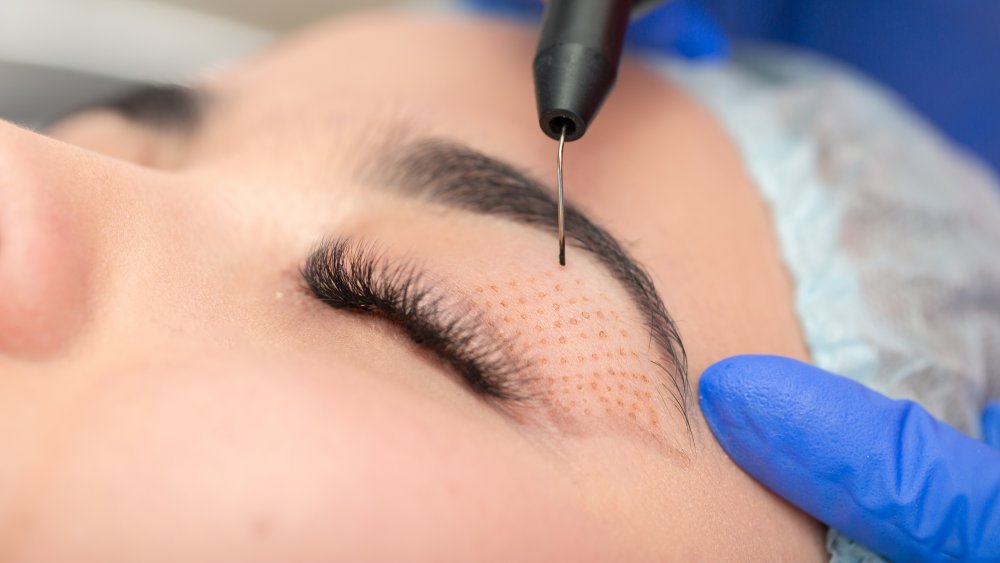This Is What Actually Causes Hooded Eyes
Whether it's from daily routines like taking off your makeup, underlying medical conditions, or just acute, stress-related physical trauma (rubbing your eyes out of frustration, anyone?), hooded eyelids are a common affliction that many people experience. This condition is also referred to as ptosis, and it can affect either one or both of your eyes (via Healthline). With a droopy eyelid, it can eventually impact your vision and cause secondary issues like "aching" and "migraine headaches."
More common in older adults, ptosis comes as a result of a weakened levator muscle (the muscle that holds up your eyelids); this begins to stretch over time, which causes the eyelid to slowly fall. But it isn't just older people who experience this condition, it can happen in children and babies as well, either as a result of trauma, or for neurological reasons.
Additionally, continuous pulling at your eyelids can naturally loosen the muscle and cause it to droop. So, if you wear makeup every day and take it off like clockwork in the evenings, it can contribute to this sagging effect if you aren't extremely gentle throughout your routine (via Oasis Eye). The allergy-prone, heavy eye-drop users, and other people who regularly touch their eyes are also more at risk for this issue.
This surgical procedure repairs hooded eyes
You can certainly try lifting creams and other products that aim to help with this issue, but if you have a full expression of ptosis, a surgical procedure is likely the only way to fix it. Blepharoplasty, a common surgery that insurance sometimes covers, helps lift the extra skin off of your eye so that it no longer blocks your vision (via Oasis Eye).
According to Julian Perry, MD, "The surgical options are designed to treat structural issues around the eyelids, such as crow's feet or deeper crevices due to aging" (via Cleveland Clinic). Your doctor will test you to make sure that the drooping eyelid isn't the result of another medical condition before your surgery as well (via Healthline), and may offer an alternative solutions like the "ptosis crutch," which is "an attachment to the frames of your glasses" that physically holds the eyelid in place.
You can also try other products that help with things like wrinkles, and work to firm up your skin to reduce the appearance of tired eyes, such as botox and fillers. In the meantime, make sure that you're exceedingly gentle with your eye area as the skin is highly delicate. No matter if you're suffering from allergies or wiping off makeup on a daily basis, it's important to handle this area with care.

